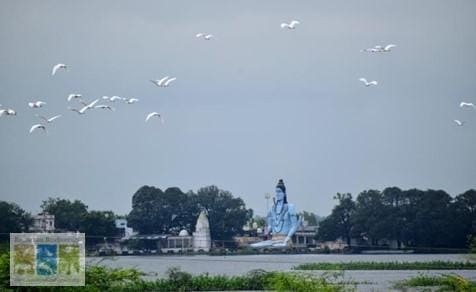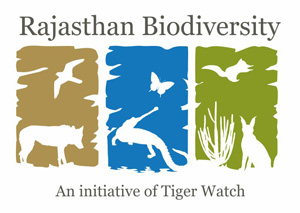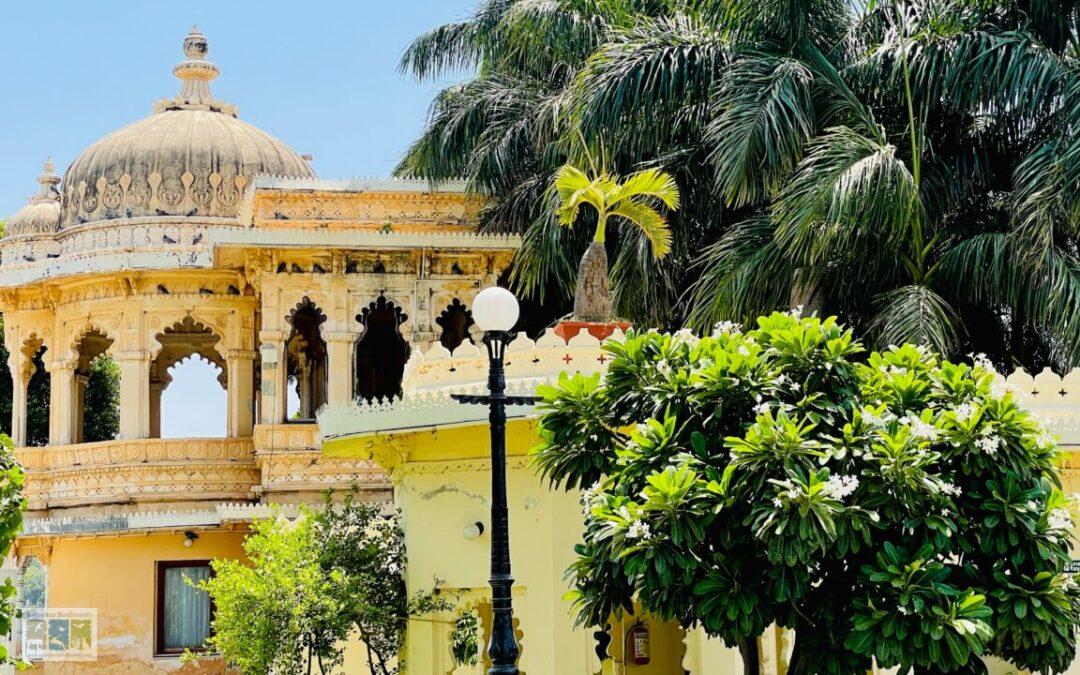
MENAR: An Ordinary Village Pond to an Important Bird Area Site and Beyond
A few years back Menar was not so known in the area as it is known today. Menar is a small village on the Udaipur – Chittorgarh National Highway (NH 76), 50km away from Udaipur City. It is a Menaria Brahmin-dominated village. This village is well known for its cultural legacy. Two beautiful water bodies are present in this village nearly 1 km apart from each other which have created a new history in recent years. The small-sized waterbody is present towards the northwest outskirts of the village, called Braham Talab. A giant Lord Shiva statue is present on the embankment of this pond in a sitting posture. Another big-sized pond called Dhand Talab is present towards the southern end of the village near Menar – Bhinder Road. Both the ponds have beautiful earthen embankments. Many old, aged mango trees (Mangifera indica) are present on each embankment. A big-sized colony of a Megabat species, the Indian Flying Fox (Pteropus giganteus) is present among the Mango trees of Braham Talab.
Menar is known to protect its wetlands and avifauna. Village people are very pro-nature. They have been conserving their wetlands and birds since ancient times. Forest Department, Rajasthan started celebrating the “Udaipur Bird Festival” in 2014. Every year the birders participating in the Udaipur Bird Festival, reach Menar wetlands for bird watching. Local media also played a vital role in highlighting the conservation ethos and practices of the local community to protect their wetlands and avifauna. In 2016, the Bombay Natural History Society and BirdLife International notified both ‘Menar Ponds’ as an Important Bird Area (IBA). Presently, Rajasthan has 31 Important Bird Areas and Menar is one of them. More than 100 species are known from Menar village ponds and surrounding habitats. Many Critically Endangered, Vulnerable and Near Threatened species are known from waterbodies and surrounding terrestrial habitats as shown below:
| Category | Common English name of the bird | Latin name |
| Critical Endangered | White-rumped Vulture | Gyps bengalensis |
| Endangered | Egyptian Vulture | Neophron percnopterus |
| Vulnerable | Sarus Crane | Grus antigone |
| Indian Skimmer | Rhynchops albicollis | |
| White-naped Tit | Parus nuchalis | |
| Near Threatened | Oriental Darter | Anhinga melanogaster |
| Spot-billed Pelican | Pelecanus philippensis | |
| Painted Stork | Mycteria leucocephala | |
| Black-necked Stork | Ephippiorhynchus asiaticus | |
| Lesser Flamingo | Phoeniconaiaf minor | |
| Ferruginous Duck | Aythya nyroca | |
| Black-tailed Godwit | Limosa limosa | |
| Black-headed Ibis | Threskiornis melanocephala | |
| Great Thick-knee | Esacus recurvirostris | |
| River Tern | Sterna aurantia | |
| European Roller | Coracias garrulus | |
| Alexandrine Parakeet | Psittacula eupatria |
A journey from an ordinary village pond to an important bird area:
During the last one-decade, Menar became an important birding destination not only in Rajasthan but in India as well. Gradually, this small village is also establishing its shining presence on the world birding map. So far, many honours and titles have been credited to the account of this bird village. A few of them are as follows:
| S. no. | Year | Event |
| 1. | 2014 | First Udaipur Bird Fair birders team reached for bird watching. From 2014 to 2023 birders participating in the Udaipur Bird Festival are regularly visiting the Menar Wetland complex. |
| 2. | 2016 | Menar became an IBA site. |
| 3. | 2021 | A bird fair was celebrated on December 14, 2021, by the Rajasthan Patrika at IBA Menar. |
| 4. | 2023 |
|
Beyond Important Bird Area:
Now Forest Department, Rajasthan is trying to make the Menar wetland complex a Ramsar Site. The required proposal has been prepared by the department. Hopefully, soon one more feather will be in the turban of Menar village.
Impact of Menar conservation legacy:
Menar has become a conservation model in Rajasthan. Many wetlands like Nagawali, Badwai, Kishan Kareri, Kheroda, Ramakheda, Puthiyan, Rundeda, Bhinder, Roma Talab (Mangalwad), Menpuria, Bhatewar, Bhupalsagar etc. which are present in the vicinity of Menar village are now on the way to become new “Menars” in southern Rajasthan. There is a competition in various villages to protect their wetlands like the people of Menar are doing. The conservation ethos of the people of Menar Village is now inspiring many villages of southern Rajasthan to protect and conserve their village wetlands and the aquatic fauna and flora present there.

Local youth earn their livelihood through birding (Photo: Umesh Menaria).

A stone at Bhupalsagar, dated back May 05, 1937, tells the story of wetland and bird conservation in the Mewar region (Photo: Author).


